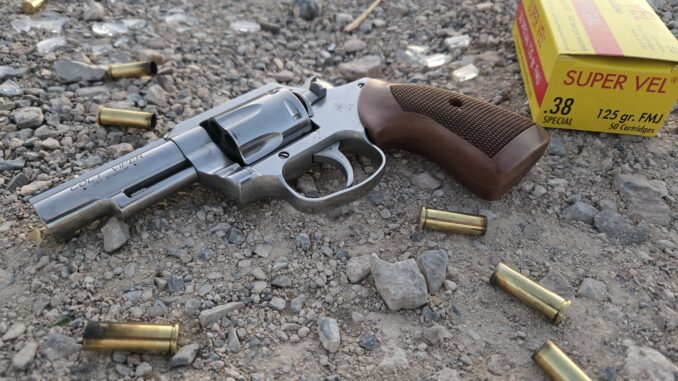
When Colt revolvers re-entered the scene in 2017, I was immediately intrigued. The Prancing Pony dances through the imaginations of many revolver enthusiasts, though they eluded my hands for years. I managed to put a few rounds through the new Python during 2020’s SHOT Show and was very impressed, but once again fate had other plans. Then this year the stars aligned, contacts were made, and things began to change. While the Python is known to many, a smaller, lesser-known snake gun had piqued my interest. This snake is the Viper, a mid-size revolver with a history all its own.
With introductions made, it was time to become acquainted with the new kid on the block. How has the Colt Viper stood up over the past few months?
Design of the Colt Viper
The Colt Viper is a stainless steel, 6-shot, 357 Magnum revolver. This particular model sports a 3-inch barrel, though an otherwise identical 4.25-inch model is also available. Normally I’m not one to get excited about markings on a gun, but the 70’s style “COLT VIPER” found on the left side of the barrel activates my millennial nostalgia for yesteryear. Moving to the muzzle, we have a recessed crown to help protect the gun, while also adding a bit more style. Finally, the underside of the barrel features a classic half-lug to secure the ejector rod.
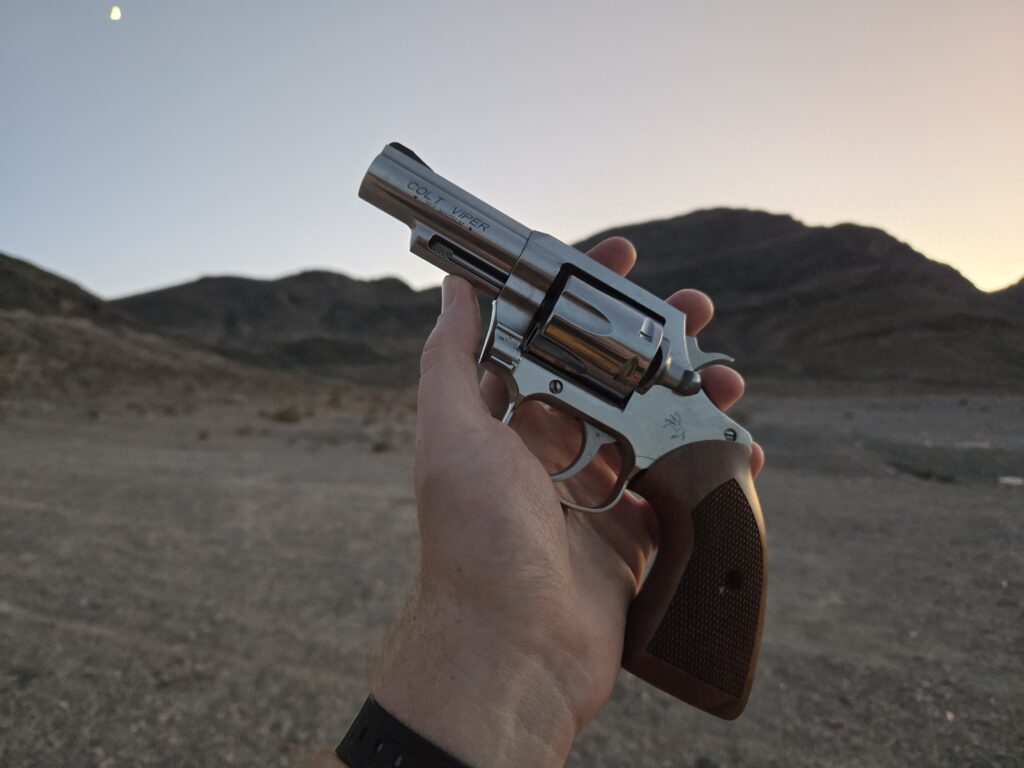
Using their modern D-Frame, the Viper is a mid-size revolver, sitting between the common J and K-Frame sizes to use a competitor’s language. This is the same basic frame as the Cobra and King Cobra line from Colt, for those unaware. It took me a while to realize how relatively small and lightweight the 3-inch Viper is, coming in around 28 ounces unloaded. Over time I appreciated this more and more; I truly think this gun is the size I’ve been searching for in a carry revolver.
Details and Controls
The standard Colt style cylinder release is low profile and nicely dehorned, pulling reward to release the cylinder. Charge holes are slightly chamfered, to facilitate quicker loading. The tip of the ejector rod is significantly knurled, though its shaping avoids any sticking within its channel when aggressively slapping the rod. As with most revolvers, the controls are simple, and no issues presented themselves during review.
Trigger
The Colt Viper’s trigger is smooth, and a little heavy, with classic stacking as found on virtually all Colt revolvers. Initially I had reservations about this in my dry practice. Once I hit the range this went totally unnoticed, and presented zero issues in live fire.

The face of the trigger itself is somewhat square, flat on the front, and smooth. During this review, my biggest range session was just over 270 rounds over the course of two hours. Despite the square shape, my trigger finger experienced no blistering, with mild sensitivity afterwards. I prefer a slightly wider and rounded trigger, but this is much more pleasant to use than I expected.
Sights on the Colt Viper
The sights on the Colt Viper are about as classic as it gets for most modern guns. The rear sight is a fixed trench milled into the top strap of the revolver, similar to the classic Police Positive. Our front sight is a simple black ramp, with serrations on the face to reduce glare. I painted my front sight to improve visibility with white and orange nail polish. Sights are non-adjustable, which means shooters need to find a load that shoots to the sights.
With this in mind, the Colt Viper’s sights are regulated for magnum loads. Federal American Eagle 158gr magnums hit perfectly to the sights, as do PMC Bronze 158gr magnums. Each 38 Special load tested hit low on target, with heavier and slower rounds being more extreme. Using Super Vel 125gr 38 Special, aiming at the top of the 8-ring of a B8 allows for X-ring hits at 15 yards. High Desert 125gr magnums are a little closer to point of aim (POA), but still a little low compared to full house loads.
Range Time with the Colt Viper
I used to Colt Viper during regular range time and dry practice over the course of a few months. Below is a breakdown of the rounds fired during my review process. In total, 924 rounds were fired through the Viper.
- 38 Special
- 15x Blazer Brass 125gr FMJ
- 35x Freedom Munitions 125gr JHP
- 484x Super Vel 125gr FMJ
- 50x Federal American Eagle 130gr FMJ
- 18x Federal Gold Medal Match 148gr wadcutter
- 50x High Desert Cartridge Company 148gr SBWC
- 1x Magtech 158gr FMJ
- 50x S&B 158gr FMJ
- 38 Special +P
- 16x Speer Gold Dot 125gr JHP
- 20x Super Vel 90gr JHP
- 357 Magnum
- 40x Super Vel 110gr SCHP
- 25x Hornady Critical Defense 125gr XTP
- 50x High Desert Cartridge Company 125gr TMJ
- 1x Federal American Eagle 158gr FMJ
- 1x PMC Bronze 158gr FMJ
- 68x Federal American Eagle 158gr JSP
During shooting I had zero stoppages or malfunctions with the Colt Viper that weren’t attributable to the ammunition. Occasionally a Super Vel round would cause some dragging during cycling, but I wasn’t able to track down the exact cause of this issue. Additionally, a single High Desert 148gr wadcutter had a burr in the primer pocket which also caused some dragging. Outside of these loads, no other issues appeared.
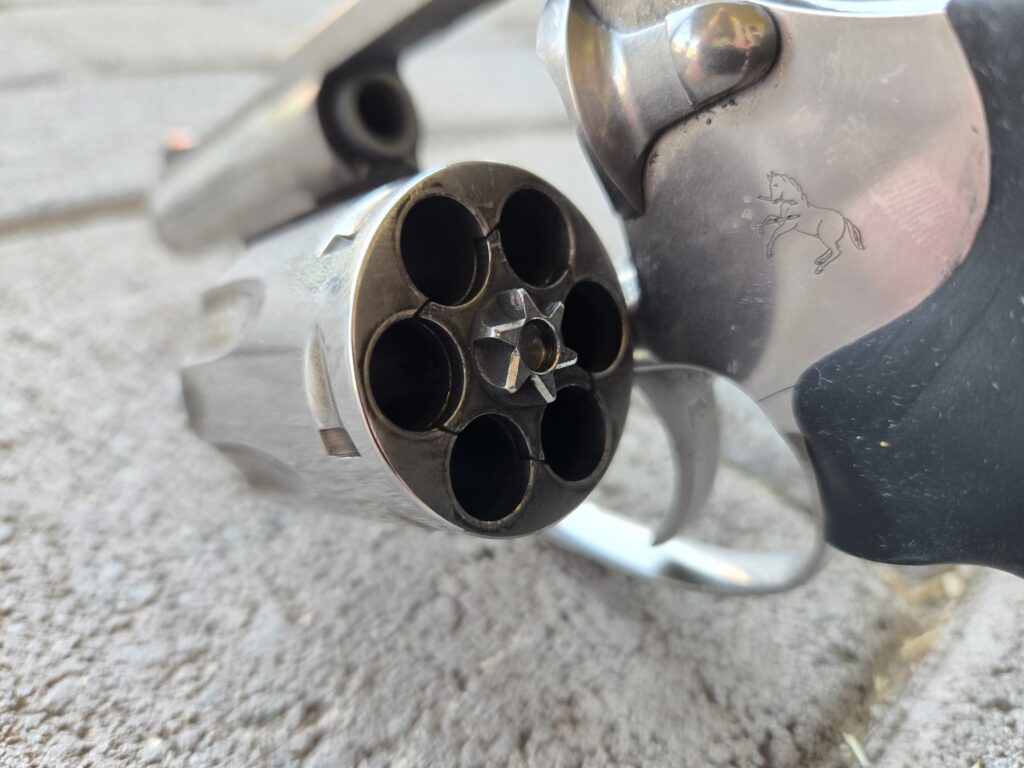
My biggest range session with the Colt Viper was just over 270 rounds during a two hour trip. During this time the gun got too hot to touch the cylinder or frame after multiple back-t0-back Bill Drills and 105 degree ambient temperatures. Despite this, I had no issues with binding or friction, which was a bit of a surprise. The next largest trip involved 175 rounds in a similar timeframe, which also went off without a hitch.
Cleaning the Colt Viper
Those familiar with revolvers know that they typically need more regular cleaning than autoloaders. Cleaning schedule will largely depend on the cleanliness of the ammunition you select. At the start of this review I thoroughly cleaned the Viper around the 300 round mark, at this point exclusively firing Super Vel FMJ loads. I could feel some grit during cycling due to fouling built up on and under the extractor star.
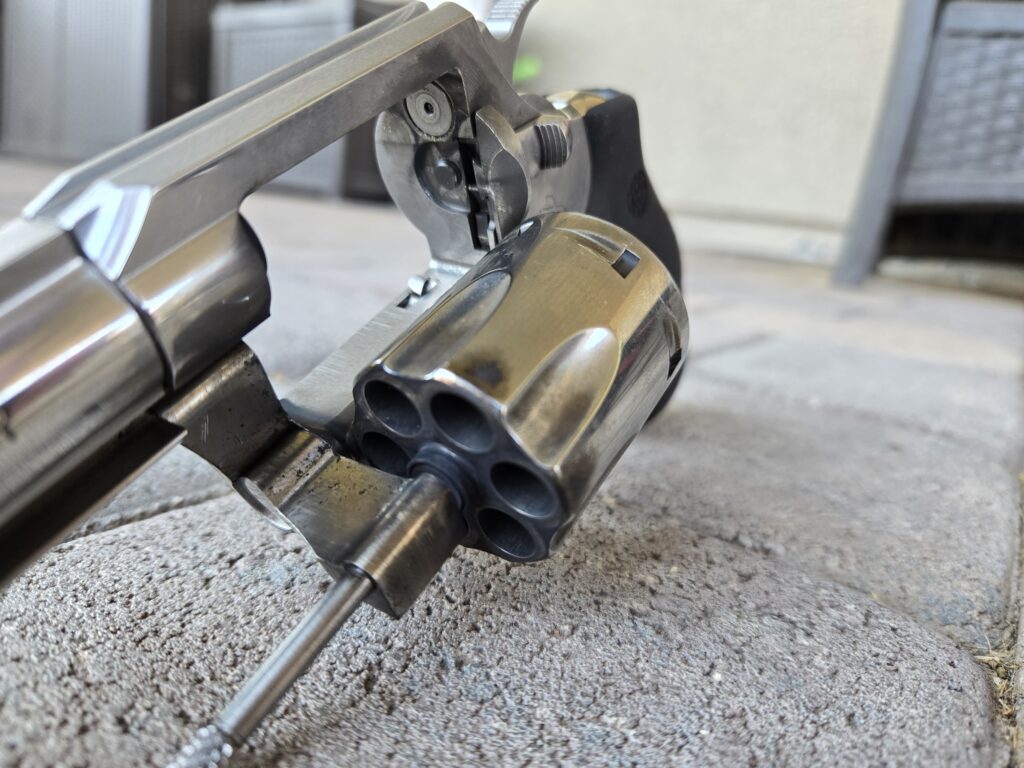
After this I decided to preventively brush away fouling every 200 rounds or so, even if the gun looked fairly clean. I’d hit the extractor star, near the firing pin channel, the forcing cone, and the front of the cylinder. Despite primarily firing 38 Special, I have yet to have any issues with fouling in the chambers, with Magnums sliding in and out of the gun with ease.
Overall the Colt Viper has been easy to take care of, and doesn’t seem particularly susceptible to fouling. Keep it happy, and it’ll keep running just fine. A quick hit with a toothbrush every few hundred rounds should be sufficient. Outside of this, no other cleaning or lubrication was done during the review process.
Skills and Drills
I tried to be very intentional about my time with the Colt Viper, as my more recent range sessions had been a bit sloppy. With this in mind, I shot several drills such as my personal revolver qualification, the Rangemaster IDC Qualification, Bill Drills, Dot Torture, and more. During my first range session I exclusively shot at my reduced size IPSC torso, sticking to 30 and 40 yard shots. Once I got my POA dialed in, it was cake to keep rounds on target, even in the fading evening sun.
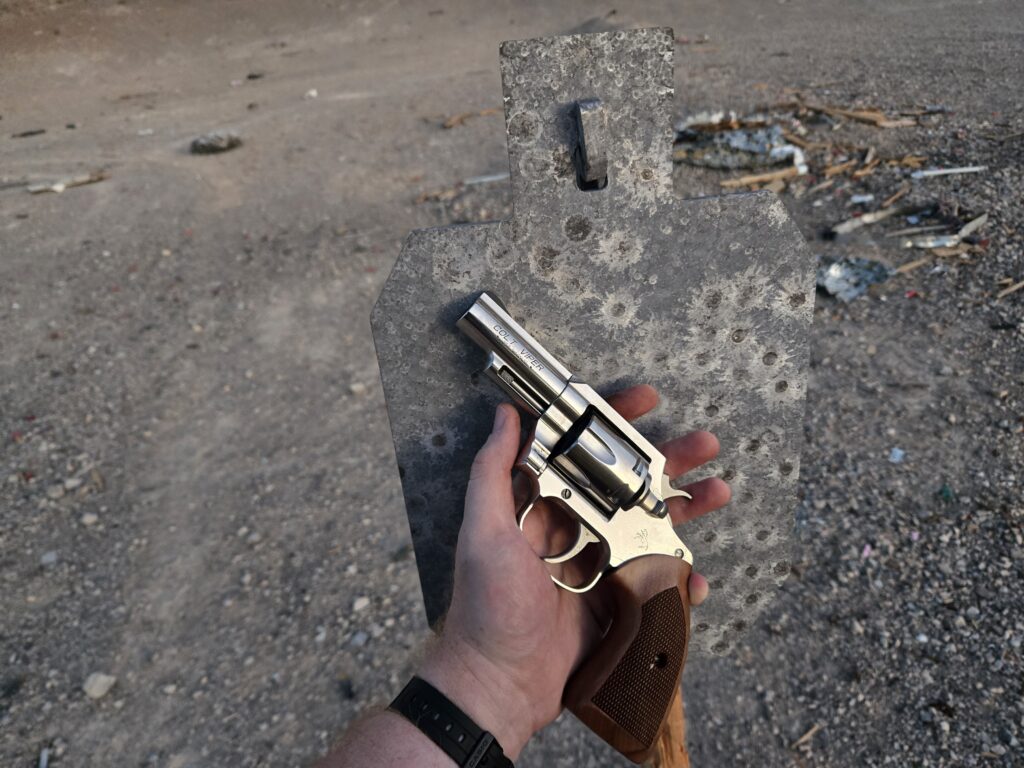
For my second range session with the Viper, I started cold with my revolver qual, narrowly passing with a 90%. Later on I cleared the FBI’s old Double-Action revolver qual with a 99%. Speeding things up a bit, I shot my first Bill Drills in quite some time from strong side concealment. At best I managed some 3.75 runs on the B8s found on my LTT-1 targets.
During my final range session I tried a few drills using full power 357 magnum ammunition, instead of the lighter 38’s I’d used previously. This made for some lower scores through a combination of more recoil and a mild flinch as fatigue set in. I failed The Test using Hornady 357 ammunition, bringing in a 52/60, despite keeping everything on the B8. Dot Torture also proved difficult with Federal 357 loads coming in at 1240FPS, with dropped shots on the one-hand stages. Focus was improved, but physics can be difficult to overcome.
Recoil with the Colt Viper
The Colt Viper is a relatively light and compact revolver despite being entirely steel. This means that it recoils a bit more than something like a Python or K-Frame. However, we’re still dealing with a mid-size gun here, so we’re not quite into Cobra or J-Frame territory either. Both standard pressure and +P 38 loads are pleasant out of the Viper, and are easy to shoot all day long. Even the High Desert 357 load is mild, especially when paired with aftermarket rubber grips.
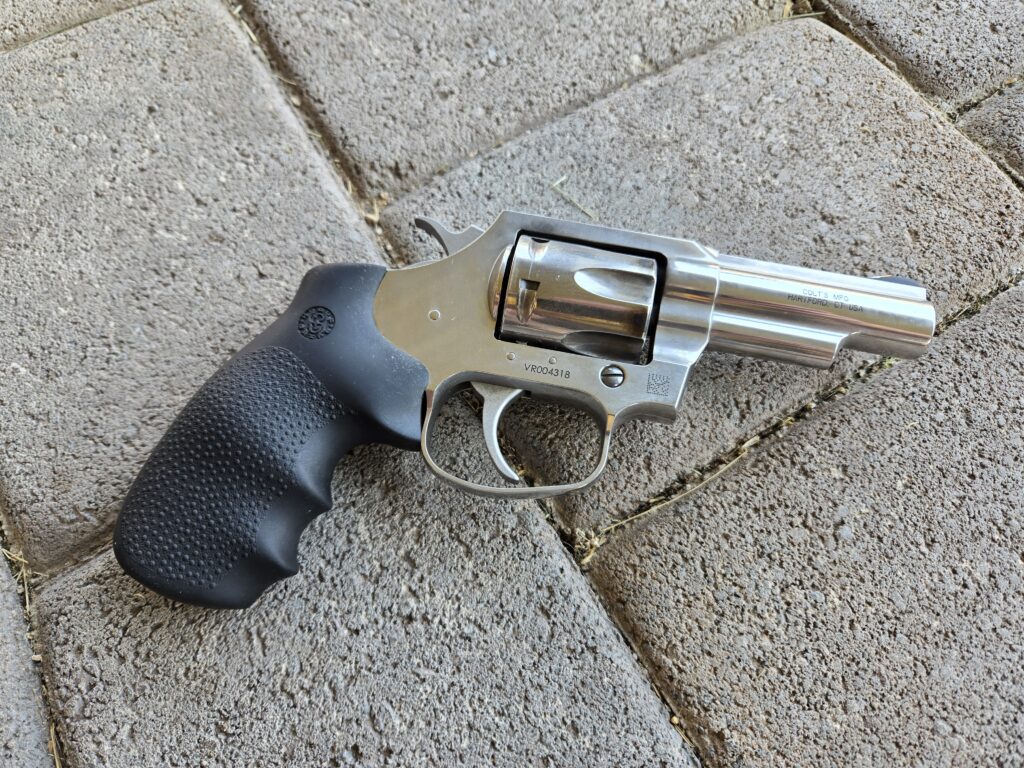
Moving into Magnum territory, things start to change a bit. Using Federal American Eagle, recoil is significant, but not painful when paired with Hogue grips. You’ll want to either have a tight two-handed grip to keep things under control, or loosen up to allow the recoil to roll through you. Poor fundamentals will cause some discomfort here. I was able to finish a long day with more than 50 of these 1240FPS rounds in less than 20 minutes. The Viper can handle just about anything you throw at it, though it certainly shines its brightest with sub-1000FPS loads.
Closing Thoughts on the Colt Viper
Overall I really like the Colt Viper. This has been a great introduction to serious use of Colt revolvers, and while it isn’t my first time with a prancing pony, it’s the first I’ve really gotten a feel for one. I’d love to see Colt update the grips, and provide a front sight that is regulated for milder loads, but those are minor complaints. I think the 3-inch Viper is a seriously overlooked gun in the revolver world, and its unique in-between size offers a lot of capability in a relatively small package.
Current MSRP on the Colt Viper is $1,149 as of this writing. You can check them out directly from Colt >>HERE<<
Author’s Note: Colt provided this Viper on loan for purposes of review. No expectations of positive coverage were provided by either party.
Support My Work
If you made it this far, thanks for reading! Writing isn’t my full-time profession, and nearly everything I do comes out of my own pocket. Between ammunition, tuition, range fees and more, expenses add up fast. If you like what I have to offer, consider making a donation to my Patreon.
Every bit helps bring more work like this to you, and contributes to shortened timelines or more in-depth work on my part. You’ll also have more direct access to me, offering suggestions for future projects, looking behind the scenes, and getting early access to some content. You can find my Patreon >>HERE<<



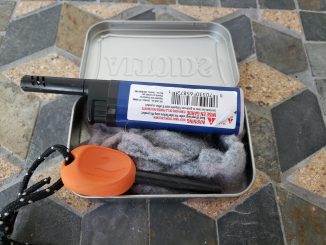

1 Trackback / Pingback